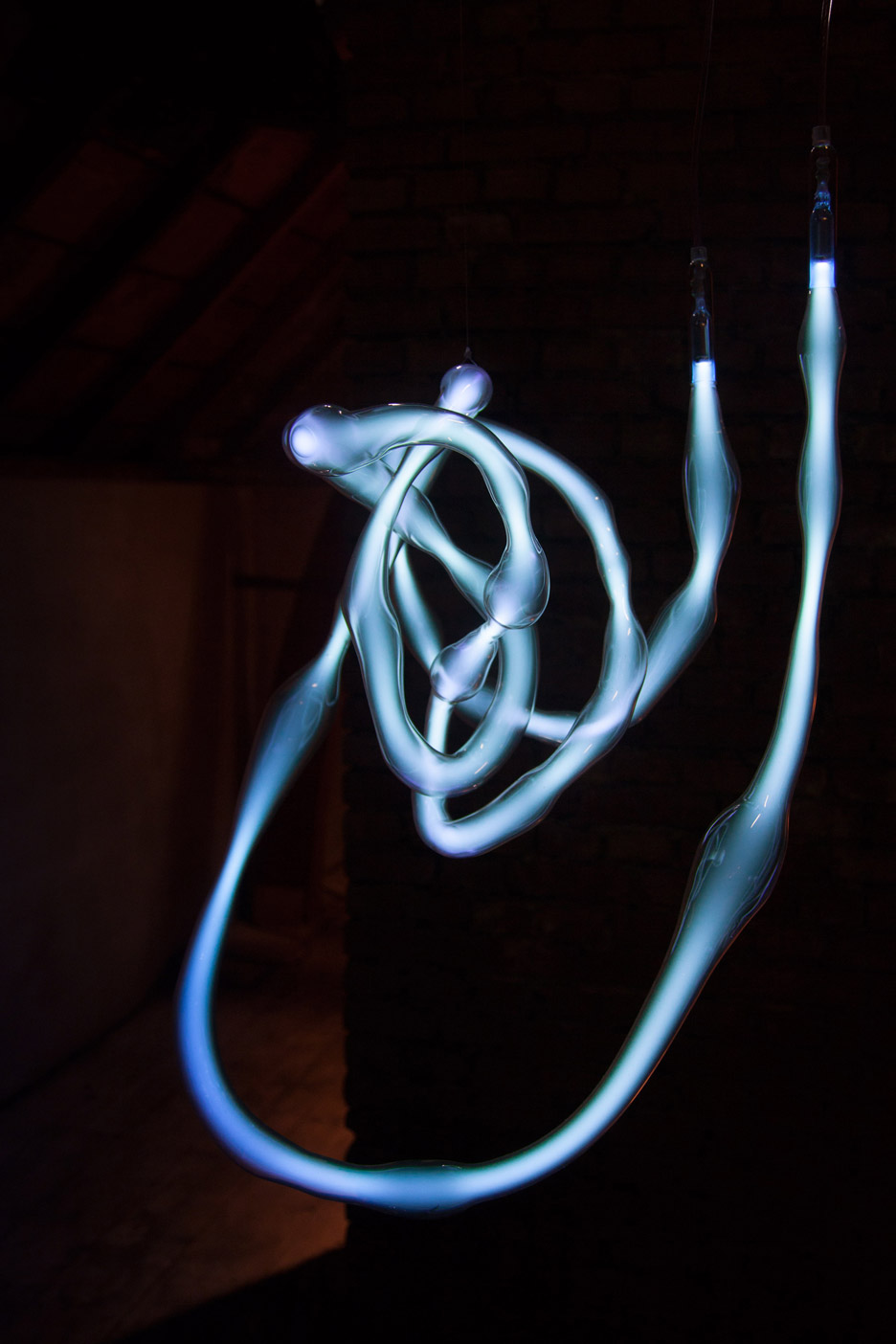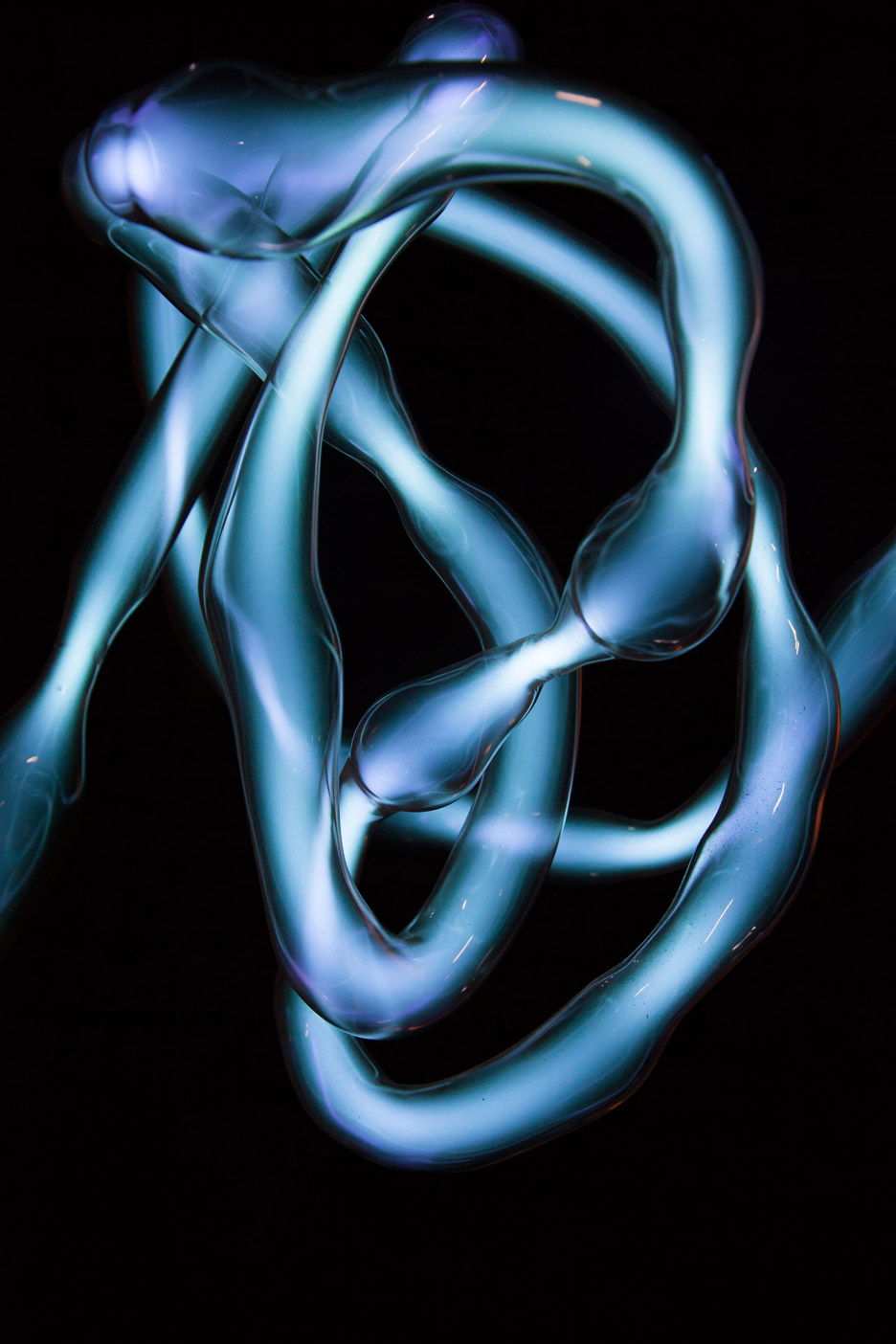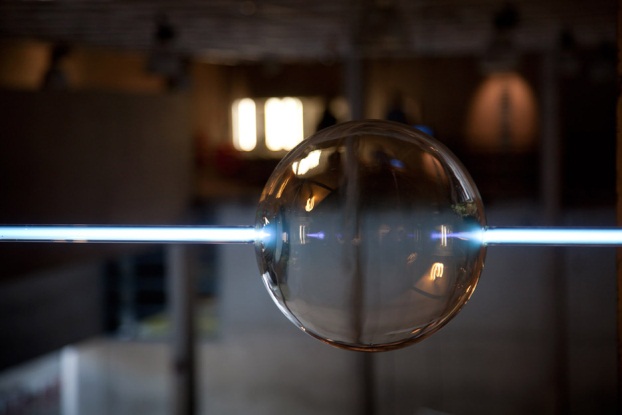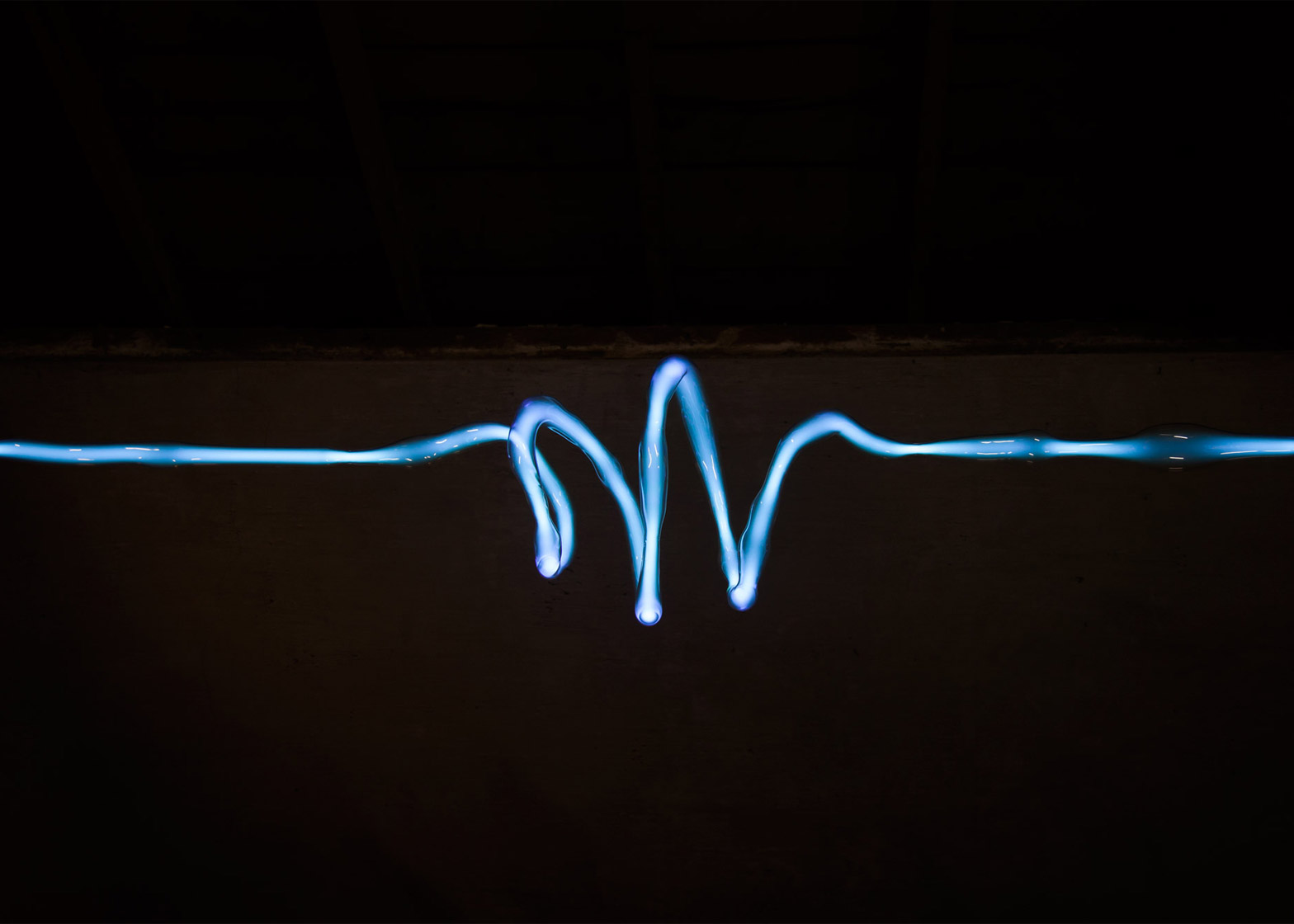LusiveLife
LusiveLife /
Design - Events - Giving - InspirationPieke Bergmans Irregularly Shaped Neon Lights

Amsterdam designer Pieke Bergmans used traditional glass-blowing techniques to form these neon lamps with uneven tubes. Bergmans noticed that neon was always encased within tubes with a consistent diameter measurement, so began to create organically-shaped vessels to see how the light was affected when more widely dispersed.
The project started with when he wondered why neon is always made inside a regular tube. He went to several experts that had been working with neon for ages, and all of them had no idea. Bergmans realized that nobody had ever done it before even though the material had been there for such a long time, so she began experimenting with irregular shapes.
As part of these initial experimentations, Bergmans blew a large bubble in the middle of a regular neon tube. She spotted that while the light remained strong and bright in the cylinder, it became invisible in the spherical area. Though she initially thought this is gas and it will all illuminate, even when it's in a wider vessel, she quickly discovered that somehow the wider it got, the more it vanished and disappeared.
The range, titled Phenomeneon, is made up of the globe-shaped lamp and a set of wiggly-lined structures which similarly emit an inconsistent amount of light. Neon lighting was invented by French engineer Georges Claude in 1910 to exploit the gas that was produced as a byproduct of his air liquefaction business.
In 1923, Claude introduced neon gas signs to the United States, and the method has been used for outdoor advertising ever since. Illumination occurs when voltage is applied to the electrodes that seal either end of the tube. This then ionizes the gas – causing it to emit a colored light.
The color emitted depends on the gas within the tube; neon gives off orange, hydrogen becomes red, helium appears yellow, carbon dioxide becomes white, and mercury is blue. Bergmans' intention was to create lamps with a "mysterious effect", compared to the typical lettering and signage.





source: dezeen, photography by Mirgam Bleeker
